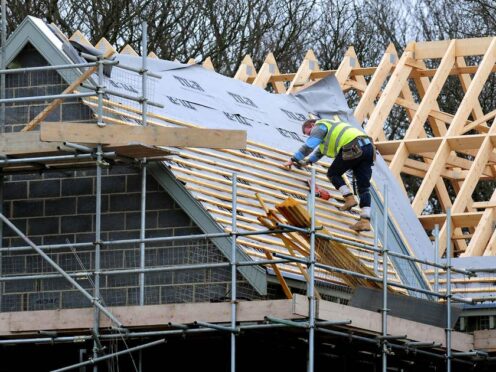The UK construction sector grew further last month but its recovery lost some momentum due to a slump in housebuilding.
Firms also reported a slower rise in new orders, with some blaming uncertainty in the run-up to the General Election.
The latest S&P Global construction purchasing managers’ index (PMI) scored 52.2 in June, down from 54.7 in May.
Any score above the 50.0 threshold indicates that activity in the industry is increasing, while anything below means it is shrinking.
The sector was therefore still growing but was also notably weaker than the 54 reading predicted by a consensus of analysts.
Andrew Harker, economics director at S&P Global Market Intelligence, said: “Continued growth of the UK construction sector in June meant that the sector has recorded sustained expansion throughout the second quarter of the year.
“While there were signs of a slowdown in the latest survey period, most notably around housing activity, firms indicated that a slowdown in new order growth was in part related to election uncertainty.
“We may therefore see trends improve once the election period comes to an end.”
Growth across the sector was driven by commercial construction work, which increased “markedly” in June.
Civil Engineering saw growth but at slower rate, according to the survey.
Meanwhile, housing saw a decline after output dropped back following its first rise for 19 months in May.
The research suggested that another increase in new contracts helped to drive growth, although it nevertheless slowed to its lowest level since February.
Peter Arnold, EY UK chief economist, said the slowdown in June was “more significant than those seen in the manufacturing and services sectors”.
“That said, May’s balance had been the highest in two years, and the survey results can be volatile from month-to-month,” he added.
“The EY Item Club thinks it would be incorrect to suggest that the June results indicate that a renewed downturn is likely.”
Kelly Boorman, national head of construction at RSMUK, said: “With the availability of subcontractors increasing, it appears there has been a delay to works carried out in June, which may be linked to businesses waiting on the outcome of today’s General Election.
“With housing targets, infrastructure investment and planning reform outlined as priorities by both major political parties, industry will be keeping a keen eye on how the next government will look to re-stimulate the market and support long-term growth, especially as housebuilders anticipate a ramp-up in 2025.
“We also expect interest rates to fall later in the year, which will help housebuilders manage material costs and margins throughout the supply chain, attracting potential inbound investment opportunities.”
